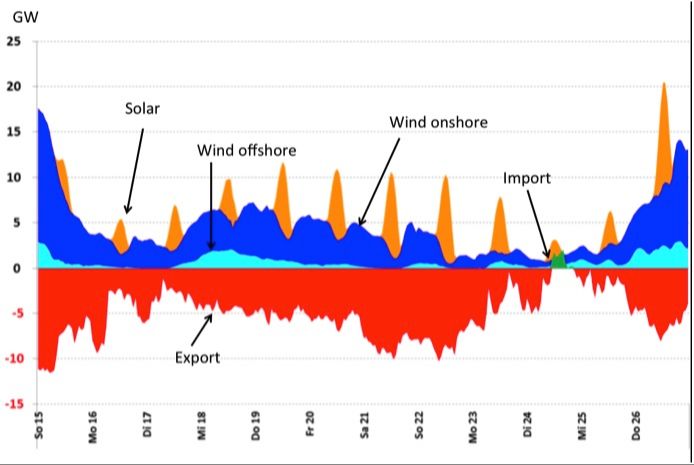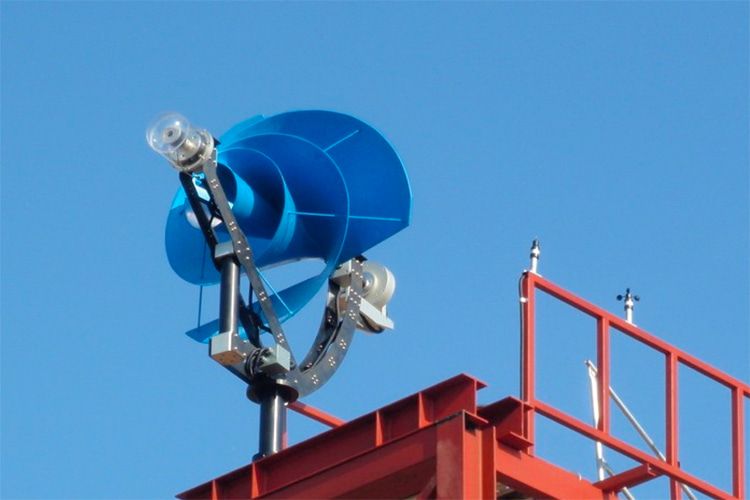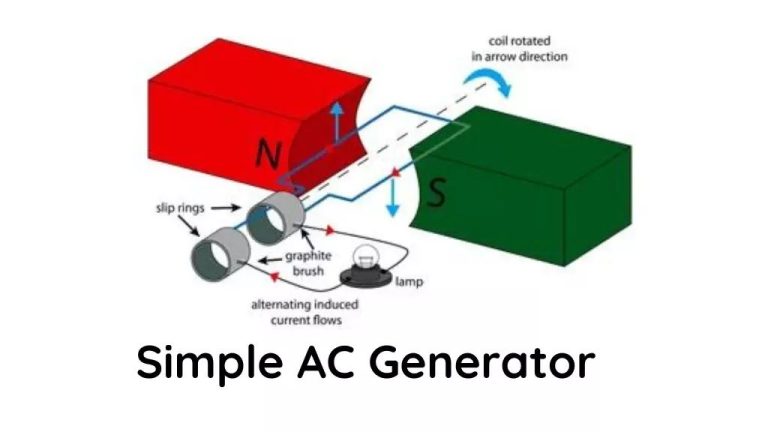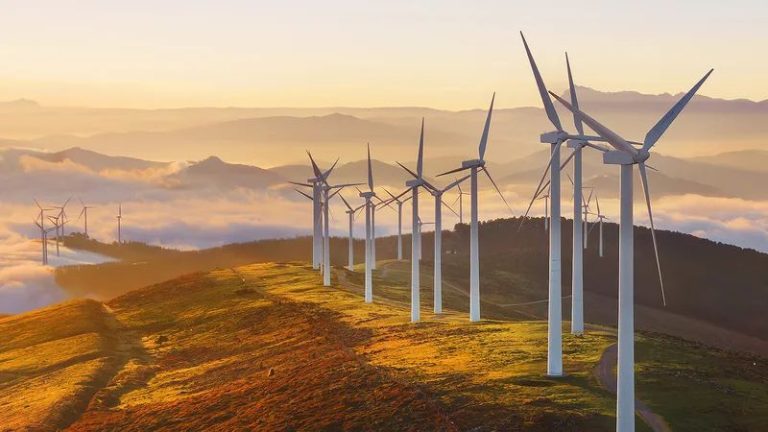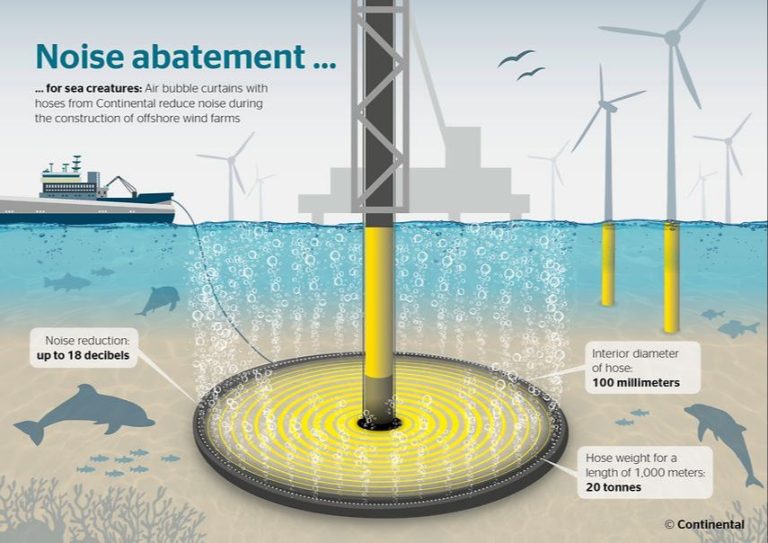How Does The Sun Make Wind?
The sun is the ultimate source of most weather on Earth, including the wind. The sun’s rays heat up the planet unevenly, creating differences in air pressure and temperature between areas. These differences cause air to move from high to low pressure zones, resulting in winds.
The uneven heating occurs for several reasons. The equator receives more direct sunlight than the poles. Land heats up and cools down faster than water. Mountain ranges and other geographic features also absorb and radiate heat differently. All of these factors cause the atmosphere to be heated unevenly, creating areas of higher and lower air pressure.
Air naturally flows from high to low pressure zones. As it moves, the rotation of the Earth deflects winds so they blow parallel to pressure zones rather than directly north and south. The greater the pressure difference between two areas, the stronger the winds. This basic process of uneven heating by the sun is what drives wind patterns across the planet, from localized breezes to global trade winds.
The Sun’s Energy
The sun is an enormous ball of hot gases and plasma held together by gravity. Through the process of nuclear fusion at its core, the sun transforms hydrogen into helium and releases enormous amounts of energy in the form of radiation and matter. This energy emanates from the sun in all directions in the form of electromagnetic radiation, including visible light, infrared, ultraviolet, X-rays and gamma rays. The sun also constantly emits a stream of charged particles known as the solar wind.
The sun outputs an estimated 3.8 x 10^26 watts of power, equivalent to about a billion nuclear bombs exploding each second. Only a tiny fraction of this energy reaches Earth, but it is more than enough to drive our weather systems and sustain life. The sun’s energy travels the 150 million kilometers to Earth in around 8 minutes in the form of electromagnetic radiation. This influx of solar energy is the primary driver behind most of our weather on Earth.
Heating the Atmosphere
The sun’s energy heats the Earth’s surface and atmosphere unevenly. The sun most directly heats the equatorial regions, while the polar regions receive less direct sunlight and absorb less heat. Land, water, and air all absorb and hold heat differently. For example, land warms more quickly than the oceans during the day but also cools more quickly at night. Differences in pressure, temperature, and density develop between the equator and the poles, as well as between land and sea and areas at different altitudes. These differences drive global wind patterns.
Air Pressure Differences
The sun’s rays do not heat the Earth evenly. Areas near the equator receive more direct sunlight than the poles. The atmosphere and surface absorb solar energy at different rates based on exposure, altitude, reflectivity, and several other factors. This uneven heating causes air pressure differences across the planet.
Areas that receive more direct sunlight are heated more than other areas. As air warms, the molecules spread apart, decreasing its density. Warm air is less dense and has lower air pressure than cooler air. The differences in density and pressure cause air to flow from high to low pressure. These pressure gradient forces are strongest where temperature variations are greatest.
Cold dense air with higher pressure tends to sink and flow towards warmer areas with lower pressure. The greater the temperature and pressure differences between two places, the faster air will move to balance out the pressure.
Wind Flows
Wind flows from areas of high air pressure to areas of low air pressure. As the sun heats the Earth’s surface, it warms the air above it. Warm air is less dense than cold air, so it rises, creating an area of lower pressure. Meanwhile, cooler air sinks and creates an area of higher pressure. The differences in pressure cause air to flow from high to low pressure, creating wind.
Air flows fast from areas of high pressure to low pressure, driven by the pressure gradient force. The greater the difference in pressure between two locations, the stronger the pressure gradient force and the faster the wind speed. Wind direction is also determined by moving from high to low pressure. Using weather maps with isobars showing air pressure, meteorologists can predict wind patterns.
Global Wind Patterns
The Sun’s heating of the Earth’s surface creates some large-scale global wind patterns due to the rotation of the Earth. Some examples of these major wind patterns include:
Trade winds: These prevail in the tropical latitudes between 0 and 30 degrees north and south of the equator. In the Northern Hemisphere, the trade winds blow from the northeast and in the Southern Hemisphere, they blow from the southeast. They flow across the tropics toward the equator.
Prevailing Westerlies: These blow from the west toward the east in the middle latitude temperate zones between 30 and 60 degrees north and south of the equator. Their strength increases during winter in each hemisphere.
Polar Easterlies: These winds originate from the polar high pressure zones and blow from the east toward the west in polar regions within the Arctic and Antarctic circles.
Monsoons: Seasonally reversing wind patterns that are most notable over southern Asia. During summer, increased land temperature creates low pressure over land, causing moist maritime air to move onshore. In winter, the opposite pattern occurs.
Jet streams: Relatively narrow bands of strong wind in the upper levels of the atmosphere at altitudes around 30,000 ft. These fast flowing air currents are located near the tropopause and are predominantly westerly winds (flowing west to east).
Local Wind Patterns
In addition to the large-scale global wind patterns driven by the Sun, there are smaller-scale local winds caused by more localized heat differences.
One example is sea breezes. During the day, land warms up faster than water. The warm air over land expands and rises, and the heavier cool air over the water moves in to take its place, creating a sea breeze blowing from the water toward land.
At night, the opposite effect occurs- the water retains heat longer than the land. The cool air over the land sinks and moves out over the water, creating a land breeze blowing from the land out to sea.
Another local wind is mountain winds. During the day, the slopes of mountains are heated by the Sun, warming the air and causing it to rise upslope. This pulls in air from nearby valleys, creating valley breezes. At night, the mountain slopes cool rapidly, and dense cool air flows downslope as mountain breezes.
These local wind patterns add to the complex movements of winds driven by global circulation patterns created by the Sun’s heating of the Earth’s atmosphere.
Wind Speeds
The speed at which wind travels depends on several factors. The greater the differences between high and low pressure areas, the faster the wind flows from high to low pressure. Altitude also impacts wind speeds. Winds are slower near the ground due to friction with the earth’s surface. At higher altitudes, there is less friction allowing winds to pick up speed. Temperature differences between two locations results in faster moving winds. Cold dense air accelerating into warmer lighter air creates faster wind. The orientation of mountain ranges and valleys can channel winds to blow faster through gaps. Wind speeds also vary based on the time of day and season as temperatures fluctuate. The fastest winds are typically found in deserts, along coasts, and at higher elevations.
Seasonal Variations
Winds can vary significantly depending on the season. This is because the position of the sun changes throughout the year. In summer, the sun is higher in the sky and its rays hit the Earth more directly. This causes more warming in the summer hemisphere compared to winter. The increased warmth leads to lower pressure over land compared to the oceans, creating more onshore winds.
In the winter, the sun is lower in the sky. Its rays spread out over a larger area, leading to less heating over land. The temperature contrast between land and sea is reduced, meaning winds are generally lighter. High pressure systems become more frequent in winter, bringing more offshore winds in coastal regions.
The jet stream also shifts position through the seasons. In summer, the jet stream moves poleward, which can alter wind patterns at mid-latitudes. In the subtropics, monsoons lead to dramatic seasonal differences in winds. During summer, winds blow onshore, while in winter they reverse and blow offshore.
There are also important seasonal variations in tropical regions related to the migration of the Intertropical Convergence Zone (ITCZ) following the overhead sun. The ITCZ is a belt of low pressure near the equator where the trade winds converge. As it moves, it brings periods of high precipitation and calm winds.
In summary, seasonal variations in winds are driven by the sun’s differing effect on global air pressure and circulation patterns throughout the year. This includes monsoon winds, shifts in the jet stream, movement of the ITCZ, and differences in land/sea temperature contrasts.
Conclusion
In summary, the sun creates wind through the process of unevenly heating the Earth’s atmosphere. The sun’s rays heat up the planet’s surface, which in turn warms the air above it. This warm air becomes less dense than surrounding air and rises. As this air rises, cooler, denser surrounding air rushes in to fill the void. The movement of air from areas of high pressure to low pressure is what creates wind. The sun’s heat sets the entire process in motion by creating areas of low and high pressure. The greater the temperature differences between these air masses, the faster the winds blow as the pressure imbalance is greater. In this way, the sun’s energy is transferred to the atmosphere and converted into the kinetic energy of moving air – what we perceive as wind.

